deepeye.hu
Astronomical Drawings of Peter Kiss
Astronomical Drawings of Peter Kiss





This drawing has a story. NGC 6744 is an iconic galaxy in the southern sky. An object that has to be seen. I took a look at it on our 2012 trip with the 16" Dobsonian. I remember a very delicate tenuous spiral galaxy in a beautiful Milky-Way starfield. I didn't draw it then and unfortunately these memories fade very quickly unless I draw or write down my observations.
In 2016 I had a lot of nights with my little 4" Dobsonian - in the first part of our trip I didn't have access to the 16" Newtonian. Towards the end of these first nights I thought I would draw NGC 6744 with the small scope. Of course I could see only a faint diffuse spot without any details. I stared to draw the starfield on the May 03/04 night. The next night I finally got the big scope. This is what I imagine to be like when a desert wanderer finally gets to drink water from a cool spring. I had a lot of objectives and the 4" NGC 6744 drawing got forgotten. On the night of 05. 07/08. I continued to draw the starfield but without any fun. Then the drawing lay there there unfinished. I thought about it and we talked about it with the others - it needed to be finished. But with the big telescope! So I took my big eraser and erased several ours of my work I did under Namibian starlight. Then I predrew the skeleton of the 16" starfield from Guide (only a few of the brightest stars - an equally small dot for each regardless of the brightness). And I started to draw the starfield again at night by the telescope.

On out last clear namibian night the starfield was still there unfinished in my sketchbook. I was dead tired without any motivation to finish it. We went in to the house for a tea and biscuits under the star lamp. And we talked about NGC 6744. This is one of Ivan's favourite galaxies. Everybody was excited and urged me to finish the drawing and I managed to get the much needed motivation.
NGC 6744 is a barred spiral galaxy in the constellation of Pavo. It lies about 30 million light years away which means that it is pretty close. Its luminosity and size are both about twice of our Milky-Way. Its morphology is very similar to what we think about the Milky-Way. If it was possible to fly a couple of 10.000 light years above the plane of our galaxy we would probably see something like this.
The catalogue data might suggest an easy sight. It is big (about 20') and bright (about 8m). But it is very much lacking contrast. The spiral arms are very vague. They barely rise above the brightness of the diffuse glow of the galaxy. The core of the galaxy is very bright and small but not stellar. Continuing outwards on the bar the brightness decreases rapidly. The outer parts of the bar and the ring are already very faint. In order to see the spiral arms an exceptionally good sky helps even in Namibia. In 2012 we had a few such magical nights when the seeing and transparency were both basically perfect and the skyglow very weak... In 2016 we were not so lucky - the spiral arms were not easy to spot.
NGC 6744 has a small 14.5m companion, NGC 6744A (PGC 62815) which was visible in the 16" telescope. It is faint but a brighter thread was still visible in it.
On out last clear Namibian night in 2016 everybody was excited about NGC 6744 so we took a look at it with the 24" telescope as well. It was stunning that the details that required hours of concentration in the 16" telescope were visible a second before placing my eye at the exit pupil of the eyepiece. NGC 6744 reveals its beauty in bigger scopes.
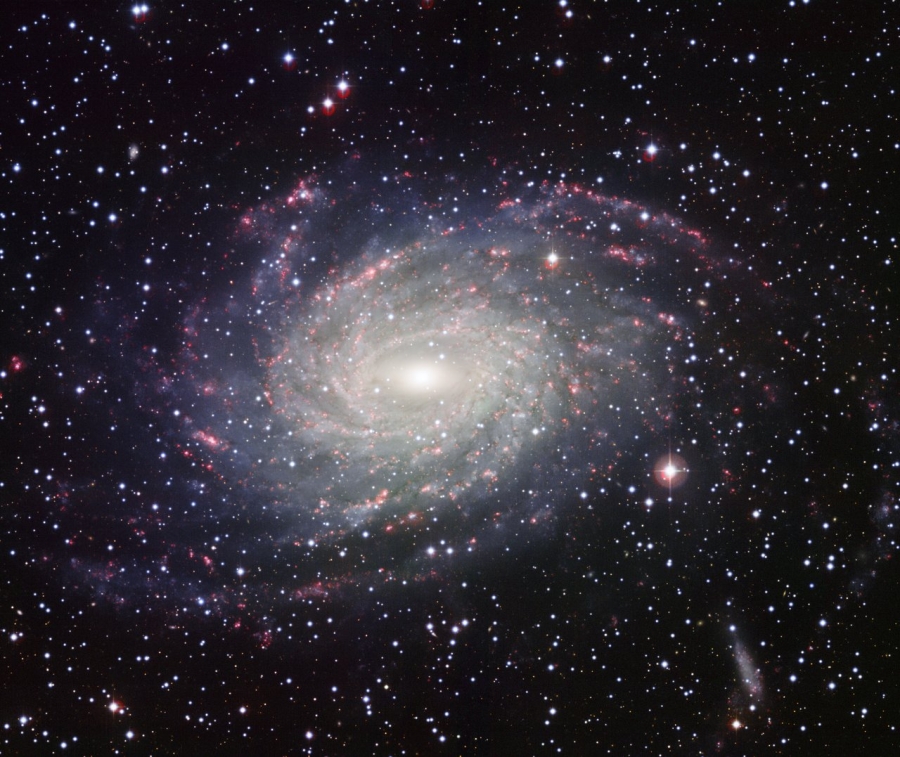
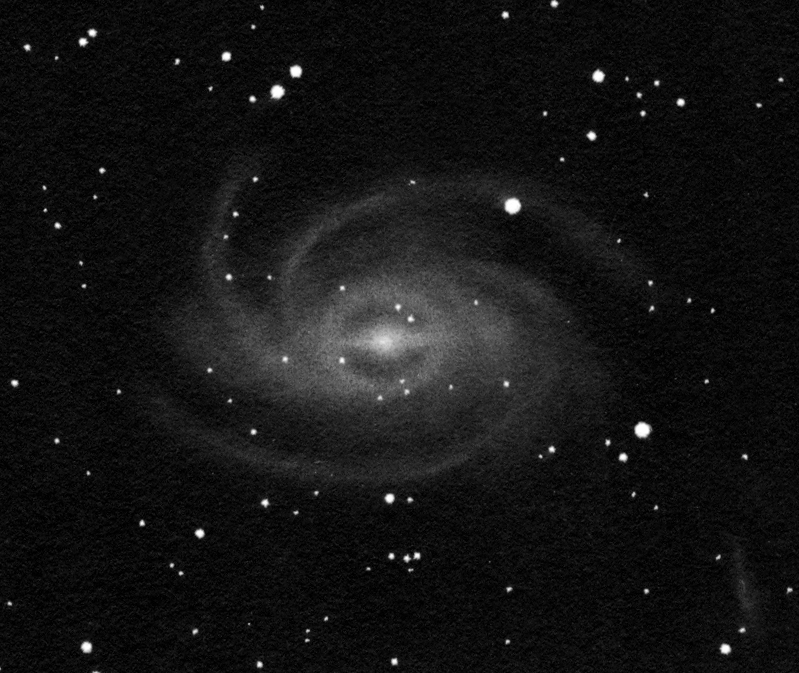
You can see a photo of NGC 6744 above made with the MPG/ESO 2.2 m telescope and the Wide Field Imager detector. This telescope can be found on the first ESO (European Southern Observatory) site La Silla, Chile. This telescope was originally planned to be installed in Namibia. The Namibian ESO site was planned on the Gamsberg. This is a table mountain and the third highest mountain in Namibia. It lies 1-2 hours of driving away from the Hakos Farm (4WD required). Walter Straube, the owner of the farm and our 2012 host helped the preparations of the planned observatory. A couple of years later the plans were revised and ESO chose La Silla in Chile.
I rotated and cropped my drawing for a better comparison with the photograph.

Though only indirectly but this drawing and NGC 6744 helped a little bit at the birth of the logo of the Hungarian Astrophotographers' Association.

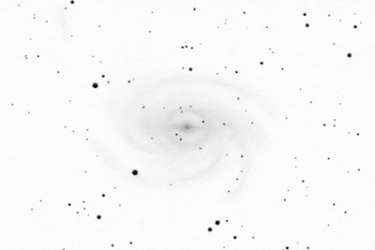
Pavo galaxy
The grand spiral galaxy of Pavo
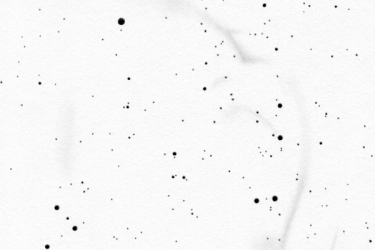
Panorama drawing
Huge and faint supernova remnant in the southern sky
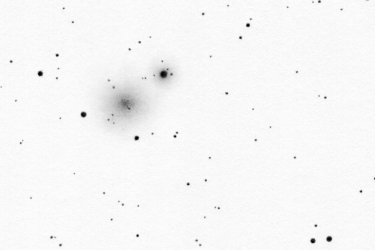
Centaurus globular cluster
The second globular in Centaurus
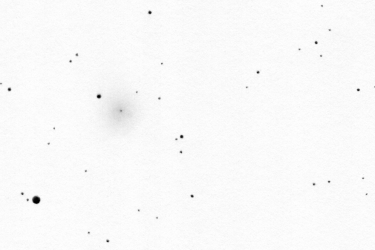
Apus globular cluster
Globular cluster close to the Southern celestial pole
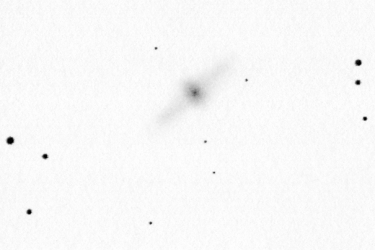
Centaurus galaxy
Polar ring galaxy
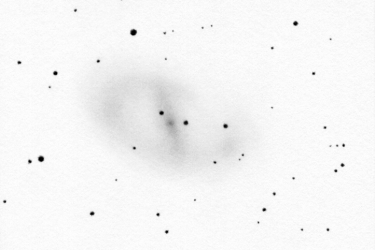
Ara galaxy
Barred spiral galaxy in the thick of the Milky Way